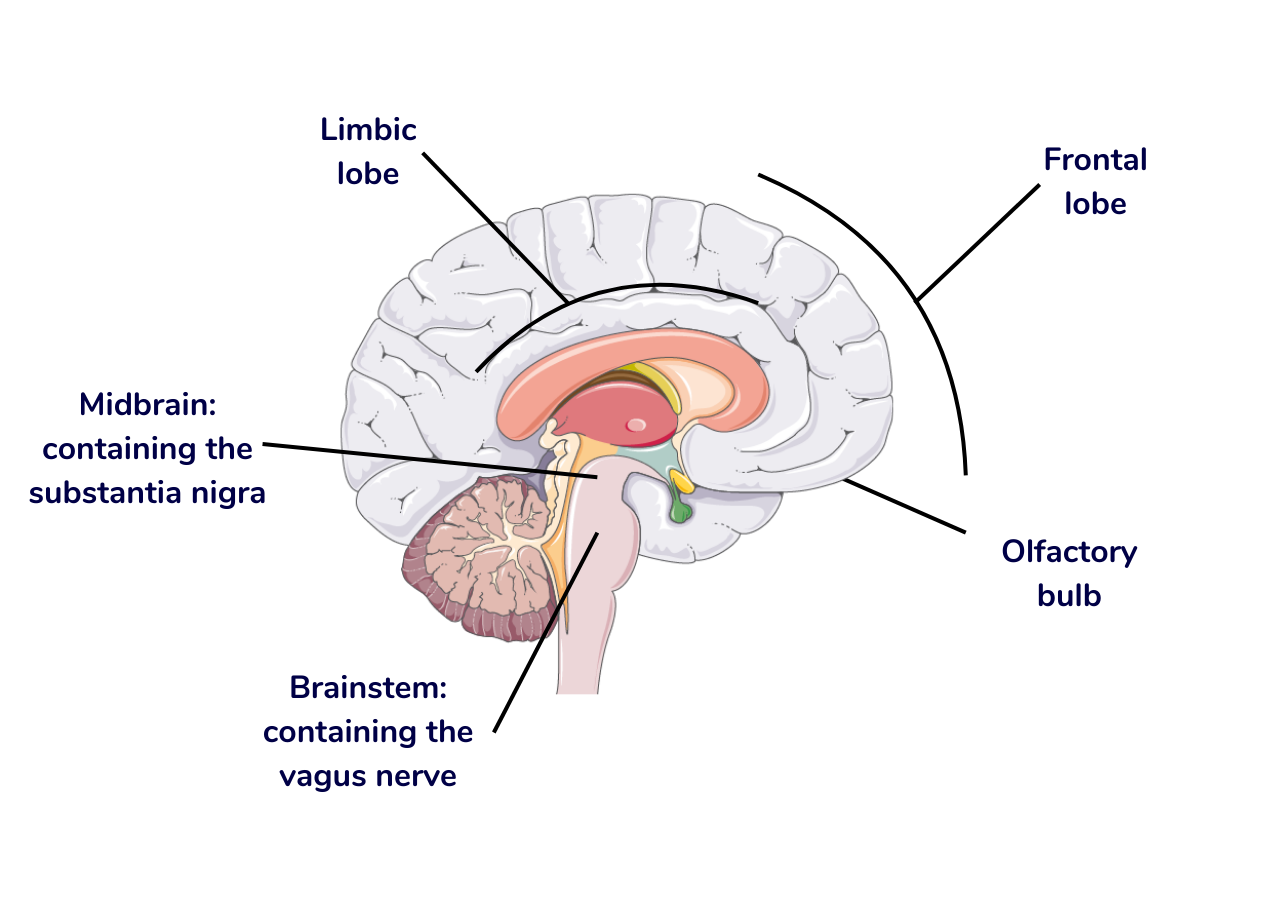What areas of the brain are affected in Parkinson's?
Take a look at the different areas of the brain affected by Parkinson’s, and what we know about how the condition develops.
The brain is complex. Different areas of the brain have different functions, but all are connected.
From our emotions to the way we move, everything is controlled via messages that travel from our brains to our bodies and back again. So when things go wrong in the brain, problems are often seen in other parts of the body too.
Parkinson's is a condition where brain cells that produce a vital messenger chemical called dopamine are lost over time. This chemical is responsible for controlling movement, and its loss results in the development of movement symptoms for people living with Parkinson’s.
But the intricate way the brain works and the complexity of Parkinson’s means that movement problems are not the only symptom of Parkinson’s. In fact, there are over 40 symptoms associated with the condition.
What causes the loss of dopamine-producing brain cells is still not fully understood. By looking at donated brain tissue, we can better understand what changes happen in the brain in Parkinson's.
What is Parkinson’s?
Watch this video to understand more about what happens in the brain in Parkinson’s
What causes damage to brain cells in Parkinson’s?
Researchers are still piecing together what is causing the progressive loss of brain cells in Parkinson’s. One piece of evidence is that a specific form of a protein called alpha-synuclein is causing problems.
Proteins are the building blocks of our bodies and carry out a variety of important functions. But when these proteins are misshapen or misfolded, they can’t perform their job normally. These misshapen proteins can then start causing more harm than good by damaging the cell or preventing it from carrying out its normal function.
In Parkinson’s, alpha-synuclein can become sticky and clump together in structures called Lewy bodies which damage cells and stop them working properly. This protein has been found in various parts of the brain and even outside of the brain. It’s also thought to be able to move from nerve cell to nerve cell. This could explain why multiple areas of the brain are impacted in Parkinson’s and why so many symptoms are linked to the condition.
Find out more about alpha-synuclein and Lewy bodies in this blog.
The substantia nigra and Parkinson’s
An area of the brain that has a particular build up of these Lewy bodies is the substantia nigra. This is the area most typically associated with Parkinson’s. Cells in this area of the brain are responsible for producing dopamine, the chemical messenger we introduced at the start of this blog which is involved in movement.
The substantia nigra sits deep in the middle of the brain, in an area called the basal ganglia. This is at the top of the brain stem: the start of a great network of cells that span the body called the nervous system. The nervous system helps transmit messages between the body and the brain, and back again.
As Lewy bodies cause damage to the cells of the substantia nigra, it becomes more difficult for these cells to produce the amount of dopamine the body needs to control movement effectively. And as Parkinson’s progresses, more and more cells become damaged, so there’s less and less dopamine available.
The brain is made up of a left and right side and therefore there is a right and a left substantia nigra. Often one side starts to experience a loss of cells before the other. Because of this, people with Parkinson’s may experience movement symptoms that are worse on one side of their body, particularly in the early stages.
But not all of the symptoms of Parkinson’s are related to movement. Symptoms such as a loss of smell, digestive issues, a lack of motivation (apathy), or problems with memory and thinking, suggest that more than one area of the brain might be affected by Parkinson’s.

What other brain areas are impacted in Parkinson’s?
Researchers have found Lewy bodies in more places than the substantia nigra. In people who have lived with Parkinson’s for a long time, Lewy bodies might be seen in parts of the limbic system, which controls our mood and emotions. This could be linked to Parkinson’s symptoms such as depression or anxiety.
Lewy bodies have also been seen in an area called the frontal lobe, which is involved in thinking and memory. Damage to these cells in Parkinson’s could explain why some people start to experience memory problems, or have trouble expressing themselves through speech.
Bundles of alpha-synuclein can be found in the olfactory nucleus, which controls our sense of smell. And in the vagus nerve, which links the brain to the gut. Damage in these areas may link to a loss of smell, or digestive problems. But these can both be quite early symptoms of Parkinson’s, before the motor problems start to appear.
Where does Parkinson’s start?
There’s a lot we still don’t know about the development of Parkinson’s. One of the key things is that we don’t know what happens first. It’s tricky to study exactly where Parkinson’s starts because by the time a person with Parkinson’s is diagnosed, a lot of the damage to the brain is already done. And we have limited tools to look at individual areas of the brain in a living person, to check for the presence or location of any damage.
Read this blog on why we need better tests for Parkinson’s to improve research.
While we’re not yet there, we’ve already come a long way in understanding how Parkinson’s affects different parts of the brain. This is helping change the way we think about treating the condition, and how we link different experiences of Parkinson’s and related symptoms to how we understand its progression. And ultimately, this will help us develop new, more effective treatments for Parkinson’s.

